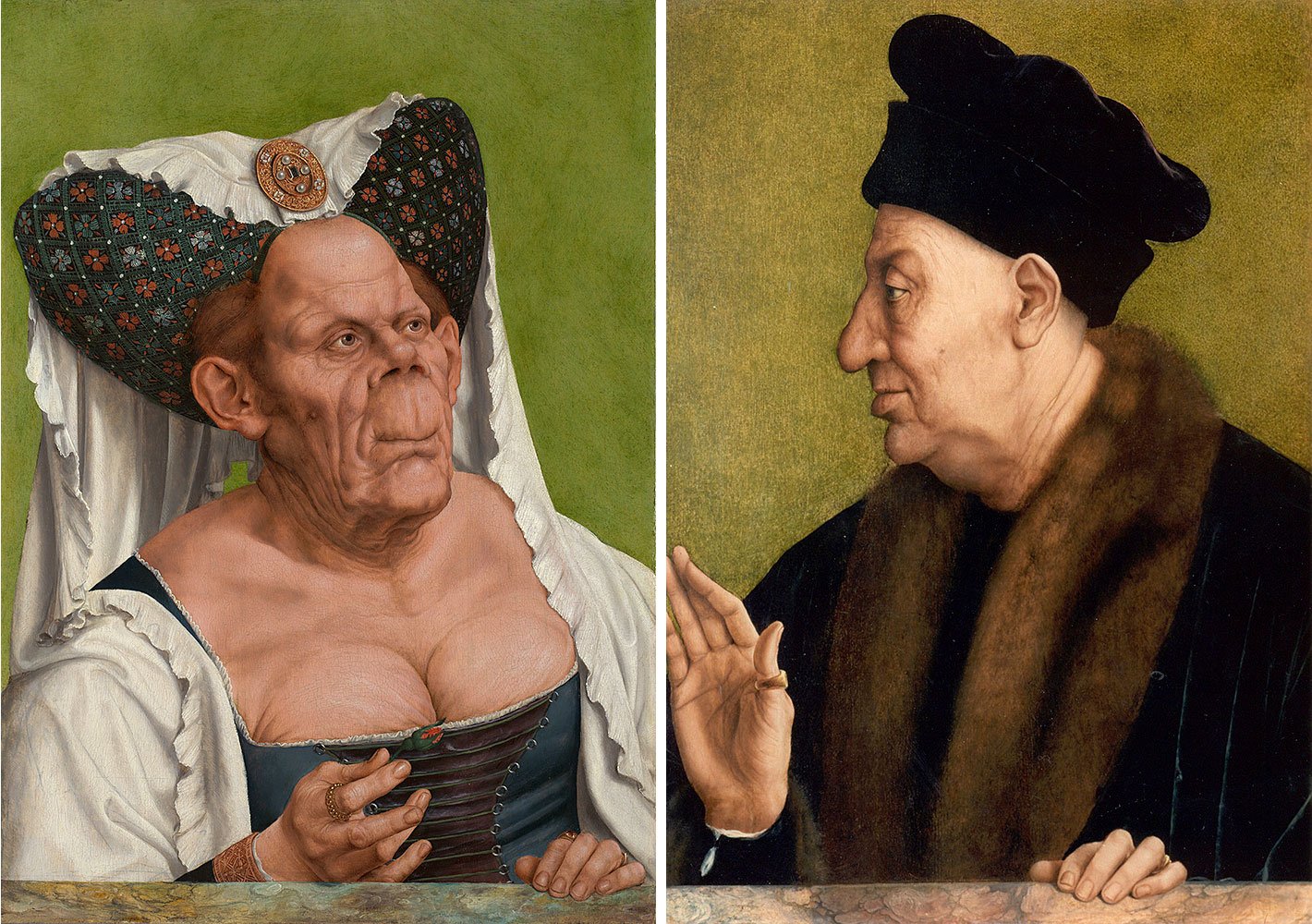
A new exhibition at the National Gallery in London is taking another look at Flemish artist Quinten Massys’s mystifying 1513 painting An Old Woman, popularly known as The Ugly Duchess.
According to a statement in the exhibition catalogue, the figure in the 16th century work “challenges every traditional canon of beauty.” It describes “an elderly woman with lively eyes set deep in their sockets, a snub nose, wide nostrils, pimply skin, a hairy mole, bulging forehead, and a prominent square chin.”
But not everyone agrees. In “The Ugly Duchess: Beauty and Satire in the Renaissance” (on view from March 16 through June 11), curator Emma Capron advocates for a different read of the enigmatic work. The leading expert in Renaissance art is making the case that the old woman is not a woman at all.
“She is most likely a he, a cross-dresser as a play on gender,” Capron told The Guardian. “We know that Massys was very interested in carnivals, where men would impersonate women.” Indeed, notes the statement in the catalogue, a festival dance known as the moresca—in which a sought-after young woman would “often be played by a cross-dressed man”—was popular in Northern Europe at the time.
Francesco Melzi, after Leonardo, The Bust of a Grotesque Old Woman (1510-20). The Royal Collection / HM King Charles III Royal Collection Trust / © His Majesty King Charles III 2023. Courtesy of the National Gallery, London.
The work has hung in the National Gallery for more than 80 years, where it is one of the museum’s “best-known faces.” Informally, it is referred to as The Ugly Duchess as it served as the inspiration for Sir John Tenniel’s illustrations of the mercurial duchess in Lewis Carroll’s Alice’s Adventures in Wonderland, the 1865 children’s classic.
Over the years, medical experts have contended that the subject suffered from Paget’s disease, in which bones weaken and eventually become disfigured. But Capron takes a different view. “It’s not Paget’s,” she said, “nor any of the other suggestions like dwarfism or elephantiasis.” Rather, “[Massys’s] images, sometimes grotesque, sometimes simply fanciful and satirical, are partly metaphors for the social disorder of the time,” explained Capron. He is also “just having fun.”
Furthermore, the exhibition claims that a drawing attributed to Leonardo da Vinci’s lead assistant Francesco Melzi, called The Bust of a Grotesque Old Woman, was the basis of Massys’s An Old Woman. Melzi’s image, on loan from the Royal Collection, is thought to be a copy of a lost original by Da Vinci’s own hand. Familiar with the exaggerated physiognomic types popularized by Da Vinci, Massys adapted the woman’s visage from one of the Italian master’s own caricatures.
Leonardo da Vinci, A Satire on Aged Lovers (ca. 1490). The Royal Collection / HM King Charles III Royal Collection Trust / © His Majesty King Charles III 2023. Courtesy of the National Gallery, London.
There is another piece to the puzzle. An Old Woman is one of a pair of paintings by Massys; the companion piece is An Old Man. They are reunited in the exhibition. However, the woman is on the left, whereas in most Renaissance paintings their positions would have been reversed. The woman is also holding a rosebud—a flower with sexual connotations—as a token of her love. Here again the roles are reversed. The gesture went unrequited as the man has his hand raised, seemingly rejecting the romance she is offering.
It “may be another clue that An Old Woman is a man in woman’s clothing,” noted Capron.
More Trending Stories: